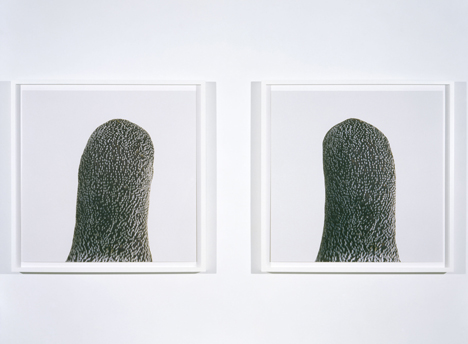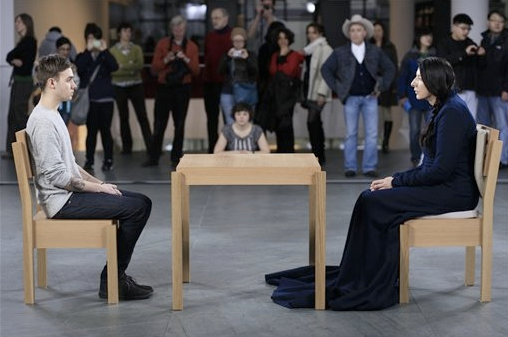I had never known the work of Alessandra Sanguinetti until I came to school to study photography. I immediately fell in love with her work featuring two cousins, “The Adventures of Guille and Belinda and the Enigmatic Meaning of Their Dreams.” I was drawn to these fantastical images in which young girls performed their visions of growing up. Sanguinetti captures the girls as they play dress up, wear wedding dresses, have pregnant bellies and ultimately hold a fake funeral. Although critics have questioned whether or not Sanguinetti forcefully instructs the girls, in her artist talk she discussed how “any other way of representing the girls would be a lie.” She doesn’t consider her photographs planned or scheduled, it is more of improvisation.
Sanguinetti has photographed these girls in the most pivotal years of their lives, a time where their bodies and minds are rapidly changing. She has captured their awkward moments and all their different personas as nine and ten year olds. As the girls play “make believe”, audiences are given insight into their lives and how they think. Guille for instance, is already worried about men leaving her because of what she’s seen in movies. Belinda is seen experimenting with different personas throughout the photographs; dressing as a man, explorer and a nun. Although these girls are playing, they are not acting out what one would assume young girls would act out. Guille and Belinda do not pretend they are princesses or animals, rather they are imagining themselves in a different period of their lives. Their mature ideas suggest the end of childhood and what is to come.
Just as in “The Adventures of Guille and Belinda and the Enigmatic Meaning of Their Dreams,” Sanguinetti acts as a witness in her series entitled, “On the Sixth Day.” She first started photographing as a young girl when she realized that someday everyone would die. Her need to document these things pays respect to her subject matter and in addition creates a permanent record. “On the Sixth Day” refers directly to how God created animals on the sixth day of creating the earth. In this series, she focuses on our relationship to animals and our dominance over them. We decide when to feed, care and ultimately end the lives of animals.
Alessandra Sanguinetti, Untitled from the series On the Sixth Day, 1996-2004
There is a clear reference of man versus beast and how animals play sacrificial creatures. Her images explore the every day lives and life cycles of animals on her father’s farm in Argentina. As viewers, we get very close to these animals. We notice the rich colors of their fur, their expressions and even can begin to observe how they are feeling. We are shown things we do not see or think about often, such as a tiny cow fetus, blood stained hands and skinned animals. We get very upset when people die and excited when children are born, but it is not a big deal when an animal goes through these stages. Sanguinetti has photographed this series from a low perspective, similar to through the eyes of an animal and creates a new viewpoint for her audience. Her photographs of animals have a “fable-like” aesthetic, as she mentioned, however, a line is drawn between fantasy and real violence.
In all of Sanguinetti’s work she discusses the relationship between the real and the fantastical world. Although at first glance her work may appear highly imaginative, the realities of her subject matter are not light and comfortable.
Anna Fink is a senior photography student at the Art Institute of Boston.

























































